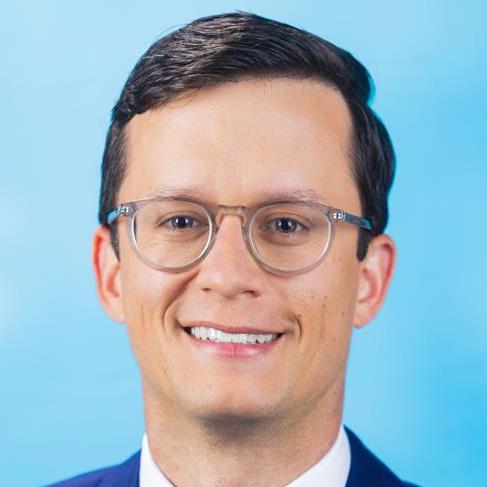As the child of a mother who immigrated to the U.S. from Peru, Jonathan Hills-Dunlap, MD, MPH, was aware at an early age of the disparities that exist within the health care system.
“I was always interested in why, just because someone has a different skin color or speaks a different language, they get treated differently. That's never resonated well with me,” says Hills-Dunlap, now an assistant professor of pediatric surgery in the University of Colorado Department of Surgery. “My own family — my mother, cousins, aunts and uncles — are treated differently just because they speak with an accent.”
That interest in health disparities only grew when Hills-Dunlap entered the world of medicine and saw how differently patients were treated based on the language they spoke, the color of their skin, or the type of insurance they had (or didn’t have). One of the reasons he was drawn to pediatrics early in his medical career was that he believed those disparities didn’t exist — or at least shouldn’t exist — among children.
“Children deserve equitable care. It doesn't matter what color their skin is, what language their parents speak, how much money their parents make, or if they don’t have insurance,” he says. “They are kids. They deserve the highest quality of care, no matter what. The adult world is a cruel place — unfortunately, disparities do exist; people treat people differently for many reasons, including socioeconomic ones — but in kids, that just shouldn't be the case.”
A test case
To further investigate health disparities in children, Hills-Dunlap in 2019 published a research study in the journal JAMA Pediatrics looking at the association between sociodemographic factors and how closely pediatric surgeons adhered to age-specific guidelines for repairing asymptomatic umbilical hernias, a common condition that usually doesn’t require surgery.
“An umbilical hernia is a hole in your belly button,” Hills-Dunlap says. “Adults can acquire them; kids are often born with them. As a medical student, you learn that when a child is born with an umbilical hernia, it almost never needs to be fixed until the child is around 4 or 5 years of age. Almost all of them — 90-plus percent of them — will go away entirely on their own in the first few years of life. The idea behind the study was, ‘Let's take a really common problem that we should not be operating on, and let's see whether people are operating on those kids.’”
Using the Pediatric Health Information System (PHIS) database that includes clinical data from major children’s hospitals around the country, Hills-Dunlap, at that point a resident at Brigham and Women's Hospital in Boston, examined the number of children who received early umbilical hernia repairs — defined as repair at 3 years or younger — and the sociodemographic data of those who received early repair vs. those who received their repairs later on. His hypothesis was that children from more affluent backgrounds — those who might have parents with good insurance, flexibility in their work schedules, or those who would push for more care — would be more likely to receive an earlier repair.
To his surprise, the data showed just the opposite.
“At a national level, we found that publicly insured and low-income kids were statistically more likely to get the potentially unnecessary surgery, which made us scratch our heads,” he says. “This paper really highlighted, for the first time with an elective pediatric surgical condition, that we are treating kids differently because of sociodemographic factors that shouldn't have anything to do with why they get an operation.”
Opening the door to more research
Hills-Dunlap has spent the years since that study conducting other studies and even a survey to find out why some pediatric surgeons perform the surgery even when it’s not recommended.
“There are many different reasons, some of them controversial,” he says. “Some surgeons are genuinely trying to do the right thing and repair a large hernia in a child who they think may get lost to follow-up or struggle to access health care in the future. Some surgeons are financially incentivized to operate, and an umbilical hernia repair should be a straightforward operation. Whatever the reason may be, the reality is that most of these hernias will go away on their own. So these surgeons are subjecting the child to a potentially unnecessary surgery and general anesthesia at a young age.”
The survey found other reasons for the disparity as well, including financial incentives, concerns about physical appearance, and concern over perceived parental neglect. For Hills-Dunlap, it was an invitation to conduct more research on the topic.
“It opened the door to looking at other disease processes and figuring out where kids are being treated differently due to sociodemographic factors that they have no control over,” he says. “We also want to look at how we can flip that scenario: How do we optimize care for vulnerable children so that we eliminate health disparities and drive health equity, rather than treating these kids differently just because their family doesn't speak English, or they have public or no insurance?”
Spanish-language clinic
Hills-Dunlap’s umbilical hernia study has led to other developments as well, including another study about disparities in treatment for children with liver cancer. He is also partnering with fellow pediatric surgeon José Díaz-Mirón, MD, assistant professor of pediatric surgery, who recently created a new pediatric surgery clinic at Children’s Hospital Colorado dedicated to serving the large Colorado Latino population in an all-Spanish-speaking clinic. Hills-Dunlap helped create a similar clinic while conducting research as a medical student at Stanford University.
“It's fascinating for me to see how differently patients are treated because they don't speak English,” he says. “We're trying to pipeline all Spanish-speaking families to a language-concordant clinic, and the idea there is to provide language-concordant care with cultural humility and sensitivity in the way our Latino patients and their families deserve. Hopefully we will see that improves patient satisfaction, clinical outcomes and decrease emergency and hospital readmissions.”
On a mission to eliminate disparities
Through his research and his clinical care, Hills-Dunlap is now devoted to eliminating health disparities and working with others to do the same.
“What we know, in 2023, is that we all have our implicit biases,” he says. “We make split-second decisions or judgements based on these biases. We carry these biases with us into our clinics and the ER; we take them into the operating room. And we can treat people differently based on these biases if we’re not paying attention. Our patients come to us with unique circumstances that we may never truly understand. We must try better to understand what their individual needs are, and how our biases can help or hurt them.”
If there’s one thing he wants his colleagues to know about health disparities, it’s that despite what they may have learned, not every patient should be treated the same. The key is looking at each individual patient’s situation and figuring how best to help them.
“We must recognize and acknowledge that health disparities exist, and that some patients need to be treated differently to eliminate those disparities and promote health equity,” he says. “It’s a strange thing to say, but not every patient should be treated exactly the same. A low socioeconomic status family needs more help. A family that I’m speaking to through an interpreter may need more time than the family I’m speaking to directly in English. If we're going to eliminate health disparities, we need to treat the people suffering from those disparities better. Our system needs to grow and evolve with this line of thinking and recognize that certain patient populations need more support.”



.png)

